The Definitive Guide to Beigu Mountain: Nature, History, and Adventure Await
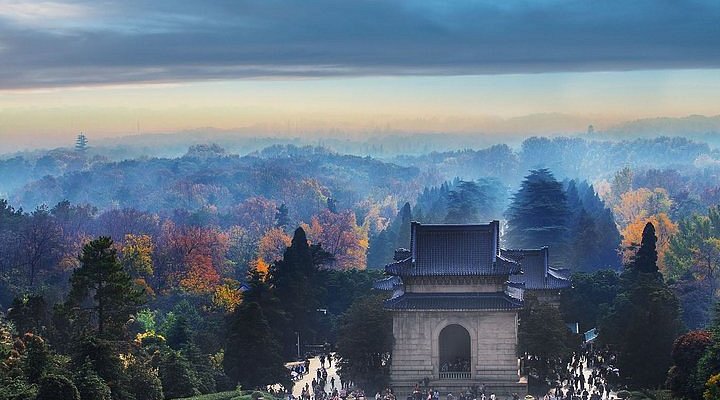
An Essential Guide to Visiting Beigu Mountain
Nestled in the serene landscape of Zhenjiang, Beigu Mountain (北固山) stands as a sentinel overlooking the banks of the Yangtze River, offering breathtaking panoramic views that will leave any traveler in awe. What sets this mountain apart is not just its natural beauty but also its rich tapestry of history, where ancient pagodas and remnants of fortifications whisper stories from centuries past. A visit to Beigu Mountain promises not only a rewarding physical challenge but also an immersive cultural experience, making it an essential stop for any international traveler seeking to explore the heart of China.
This guide will provide you with everything you need to know to make the most of your visit to Beigu Mountain. From practical tips on how to prepare for the climb, including the best times to visit and what to expect in terms of trail conditions, to insights into the historical significance of key sites along the way, we’ll ensure you have all the information at your fingertips. You’ll discover recommended viewpoints, nearby attractions that complement your journey, and local dining options to fuel your adventure. Whether you’re an avid hiker, a history buff, or simply in search of stunning vistas, Beigu Mountain awaits you with open arms and unforgettable experiences.
In This Guide
- An Essential Guide to Visiting Beigu Mountain
- The Rich History and Legends of Beigu Mountain
- Main Highlights: What You Absolutely Can’t Miss
- Planning Your Visit: A Practical Guide
- Tickets: Prices, Booking, and Tips
- How to Get There: A Complete Transportation Guide
- Local Cuisine and Accommodation Nearby
- Frequently Asked Questions
- Final Thoughts on Your Trip
The Rich History and Legends of Beigu Mountain
A Journey Through Time at Beigu Mountain
Nestled in the enchanting city of Zhenjiang, Beigu Mountain (北固山) stands as a silent witness to centuries of history and legend. From its ancient fortifications to its breathtaking views, this site offers a glimpse into the past that captivates visitors from around the world.
Ancient Origins and Historical Significance
Dating back to the Eastern Jin Dynasty (317-420 AD), Beigu Mountain was originally recognized as a strategic military outpost. Its elevated position provided a natural defense against invaders, making it a crucial site during various dynastic conflicts. The mountain was not only a military stronghold but also a cultural hub, attracting poets, scholars, and artists who found inspiration in its rugged beauty.
Throughout the Tang (618-907 AD) and Song (960-1279 AD) dynasties, Beigu Mountain emerged as a popular site for scholars and poets, who would often gather to compose verses while basking in the serene landscape. This literary legacy is still celebrated today, with inscriptions and calligraphy adorning the mountain’s ancient structures, echoing the words of great poets who once roamed its paths.
Architectural Marvels
One of the noteworthy features of Beigu Mountain is the presence of several ancient temples and pavilions. Among them, the Iron Pagoda, built during the Song Dynasty, is a testament to the architectural prowess of the time. This structure, with its intricate designs and historical significance, attracts both architecture enthusiasts and casual visitors alike.
In addition to the Iron Pagoda, the Beigu Pavilion offers a panoramic view of Zhenjiang and the grand Yangtze River. Legend has it that this pavilion was a favorite retreat for a famous poet, who, inspired by the beauty of the landscape, penned some of his most celebrated works here. Today, visitors can climb to the top and embrace the same breathtaking vistas that inspired generations before them.
Legends and Folklore
Beigu Mountain is steeped in folklore, with tales that add a mystical layer to its historical narrative. One popular legend speaks of a beautiful fairy who descended from the heavens to bathe in the mountain’s crystal-clear springs. Entranced by her beauty, a local scholar who spotted her attempted to capture her heart. The fairy, moved by his sincerity, gifted him a magical brush that brought his poems to life. This legend symbolizes the eternal connection between nature, art, and the human spirit, and it continues to resonate with visitors who seek inspiration amidst the mountain’s splendor.
Another captivating story involves the mythical Dragon King, said to dwell in the depths of the Yangtze River. According to local folklore, during a time of drought, the Dragon King emerged from the river, soaring over Beigu Mountain to summon the rains. The mountain is believed to be a sacred site where the realms of the earthly and the divine intersect, a place where nature’s forces are both feared and revered.
Conclusion: A Must-Visit Destination
Beigu Mountain is more than just a scenic landscape; it is a living history book that tells the tales of ancient warriors, poets, and mythical beings. For international travelers, a visit to this remarkable site is an opportunity to walk through centuries of history, immerse oneself in captivating legends, and witness breathtaking views that have inspired countless souls. Whether you are a history buff, a nature enthusiast, or a seeker of stories, Beigu Mountain promises an unforgettable experience that echoes through time.
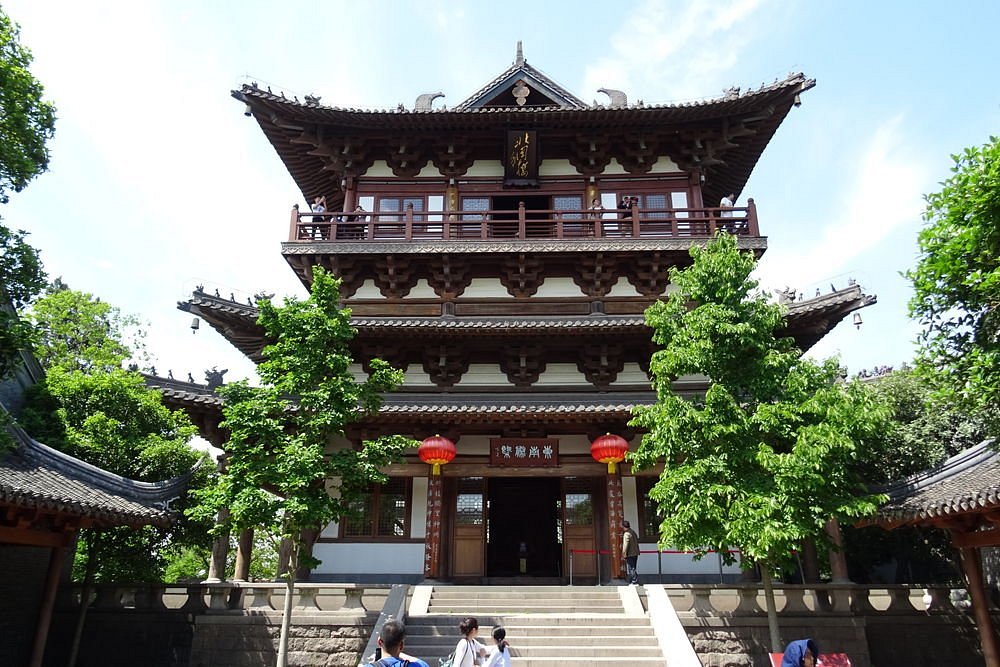
Beigu Mountain.
Main Highlights: What You Absolutely Can’t Miss
Beigu Pavilion: A Cultural Gem
Perched at the peak of Beigu Mountain, Beigu Pavilion is an architectural marvel that offers a glimpse into the region’s rich history. The pavilion is adorned with intricate calligraphy and design elements that echo the elegance of ancient Chinese architecture. As you ascend to this scenic spot, take a moment to appreciate the serene surroundings and the historical significance of the structure.
Practical Tip: Visit early in the morning or late afternoon for the best light for photography and fewer crowds.
The Summit Viewpoint: A Panoramic Feast for the Eyes
After a noteworthy climb, the summit viewpoint rewards your efforts with breathtaking vistas. From here, you can gaze over the sprawling city of Zhenjiang, with the majestic Yangtze River winding its way through the landscape. On a clear day, the view extends to the far-off city of Yangzhou. It’s a perfect spot to capture stunning photographs or simply take a moment to relish the beauty of nature.
Practical Tip: Bring a light snack to enjoy at the top while soaking in the views; there are few places as picturesque for a picnic.
The Ancient City Wall Ruins: Echoes of History
As you explore Beigu Mountain, you’ll encounter remnants of ancient city walls that once defended this strategic location. These historical ruins not only tell tales of past conflicts but also enhance the mountain’s scenic beauty. Walking along these walls, you can almost hear the whispers of history and imagine the soldiers who once patrolled them.
Practical Tip: Wear sturdy shoes as the terrain can be uneven; a walking stick can also aid in your exploration.
The Iron Pagoda: A Historical Landmark
Don’t miss the Iron Pagoda, a small yet remarkable structure that dates back to the Song Dynasty. This pagoda is a testament to ancient craftsmanship and is surrounded by lush greenery, providing a tranquil atmosphere for reflection. The structure is adorned with beautiful carvings that are well worth admiring up close.
Practical Tip: Keep your camera handy; the contrast of the pagoda against the green foliage makes for a stunning shot.
The Scenic Trails: Nature’s Embrace
The trails leading up to the mountain are lined with vibrant flora, offering a peaceful escape into nature. These paths are ideal for leisurely walks or more vigorous hikes, allowing visitors to immerse themselves in the natural beauty of the area. Birdwatching is also a popular activity along these trails, so keep your eyes peeled for local wildlife.
Practical Tip: Carry water and wear sun protection, as certain sections of the trails lack shade.
Historical Signage: A Learning Experience
Throughout Beigu Mountain, you’ll find historical signage that provides context about the various sites and structures. While some translations may not be perfect, these signs offer insight into the rich cultural heritage of the area. Use them as a guide to enhance your understanding of the mountain’s significance.
Practical Tip: Consider bringing a small notebook to jot down interesting facts or sketches of the sites you visit.
The Hidden Grottos: A Touch of Mystery
For those willing to venture off the beaten path, the hidden grottos around Beigu Mountain provide an air of mystery and adventure. These secluded spots are perfect for explorers looking to experience nature away from the crowds. Some may even offer unique photo opportunities or quiet places for contemplation.
Practical Tip: Ensure you have a good map or a local guide, as these grottos can be tricky to locate without proper navigation.
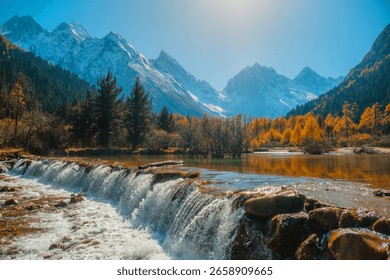
Beigu Mountain.
Planning Your Visit: A Practical Guide
Best Time to Visit
To fully appreciate the beauty of Beigu Mountain, plan your visit during late spring (April to June) or early autumn (September to October). These seasons offer mild weather, vibrant foliage, and stunning views that make hiking enjoyable. Additionally, aim for weekdays to avoid crowds, especially during the summer months and Chinese holidays.
Recommended Itinerary
Morning:
– 8:00 AM: Arrive at Beigu Mountain. Start your day early to enjoy the serenity of the area.
– 8:30 AM – 10:00 AM: Begin your hike up the mountain. Take your time to explore the historical walls and natural beauty along the way.
Midday:
– 10:00 AM – 12:00 PM: Reach the top and spend time at the viewing tower. Capture panoramic photos of Zhenjiang, the Yangtze River, and Yangzhou.
Lunch:
– 12:30 PM: After descending, enjoy lunch at a nearby restaurant, such as YongAn Yu Zhuang, known for its local Szechuan dishes.
Afternoon:
– 1:30 PM – 3:00 PM: Explore the surrounding attractions, such as the nearby Jiaoshan Mountain or Dinghui Temple, both offering rich cultural experiences.
Evening:
– 4:00 PM: Return to Zhenjiang city center and consider a scenic cruise on the Yangtze River for a relaxing end to your day.
Photography Tips
- Golden Hour: Aim to shoot during the golden hour—early morning or late afternoon—when the light is soft and warm, enhancing landscape photos.
- Wide-Angle Lens: Bring a wide-angle lens to capture the sweeping panoramas from the top, including the Yangtze River and cityscape.
- Details Matter: Don’t forget to photograph the historical elements like old walls, pagodas, and inscriptions, which tell a story of the mountain’s rich history.
What to Wear
Dress comfortably and in layers, as temperatures can fluctuate during your hike. Here’s a quick checklist:
– Footwear: Sturdy hiking shoes with good grip are essential for the climb.
– Clothing: Lightweight, moisture-wicking clothes are preferable. Consider a hat and sunglasses for sun protection.
– Weather Preparedness: Check the forecast and bring a light jacket or poncho in case of rain, as certain areas on the trail have limited shade.
Insider Tips
-
Stay Hydrated: Bring plenty of water, especially if you plan to hike on a warm day. There are limited places to refill along the way.
-
Visit Early: Arriving early not only helps you avoid crowds but also allows you to experience the tranquil morning atmosphere, perfect for reflection and photography.
-
Learn Some Local History: Familiarize yourself with the rich history of Beigu Mountain by reading up on its significance before your visit. This adds depth to your experience as you explore.
-
Enjoy Local Cuisine: Don’t miss out on trying local delicacies in Zhenjiang after your visit. The city is known for its unique flavors, including the famous Zhenjiang vinegar.
-
Take Breaks: The climb can be strenuous, so take breaks to enjoy the scenery and catch your breath. This will enhance your overall experience and allow for more photo opportunities.
By planning your visit with these tips in mind, you’ll ensure a memorable experience at Beigu Mountain, soaking in the stunning views and rich cultural heritage.
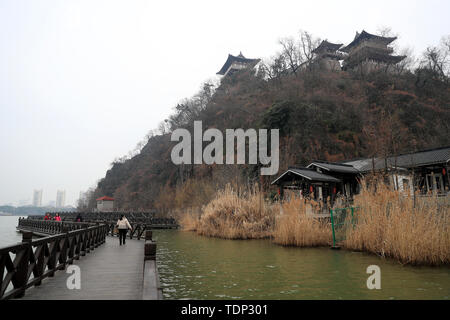
Beigu Mountain.
Tickets: Prices, Booking, and Tips
Exploring Beigu Mountain is a delightful adventure, and understanding the ticketing process will ensure a smooth visit. Below is a detailed overview of the ticket types, prices, and what each ticket includes, along with essential booking tips.
| Ticket Type | Price (CNY) | Includes |
|---|---|---|
| Adult Ticket | 40 | Access to the mountain park and all viewing platforms |
| Student Ticket | 20 | Access for students (valid ID required) |
| Senior Ticket | 20 | Access for seniors (valid ID required) |
| Group Ticket | 30 (per person) | Discounted rate for groups of 10 or more |
Booking Information
Tickets for Beigu Mountain can be purchased directly at the entrance. However, to ensure availability, especially during peak tourist seasons or weekends, it is highly recommended to book your tickets in advance.
How to Book:
1. Online Booking: Many travel websites and local tour operators offer online booking options for Beigu Mountain tickets. This can often include guided tours that enhance your experience.
2. Mobile Apps: Consider downloading popular Chinese travel apps like Ctrip or Meituan, where you can book tickets and even find discounts.
3. Local Travel Agents: If you’re in China, local travel agents can assist with booking your tickets and provide additional tour options.
Tips for Your Visit
- Timing: Arrive early to avoid crowds and enjoy the serene atmosphere as you ascend the mountain.
- Prepare for the Climb: Wear comfortable shoes and bring water, as the climb can be strenuous and there are limited shaded areas along the path.
- Explore Nearby Attractions: Combine your visit to Beigu Mountain with other nearby attractions such as Jiaoshan Mountain and the Zhenjiang Museum for a full day of exploration.
By planning ahead and securing your tickets in advance, you can focus on the breathtaking views and rich history that Beigu Mountain has to offer!
How to Get There: A Complete Transportation Guide
Reaching Beigu Mountain: Your Transportation Guide
If you’re eager to explore the breathtaking views at Beigu Mountain (北固山) in Zhenjiang, China, planning your journey is essential. This guide will help you navigate your way from nearby cities, as well as around the scenic area itself.
From the Nearest Major City
Traveling from Nanjing to Zhenjiang
Nanjing, the capital of Jiangsu Province, is the nearest major city to Beigu Mountain, located approximately 70 kilometers (about 43 miles) away. Here are your best transportation options:
- By Train
- Duration: Approximately 30-45 minutes.
- Cost: Ranges from ¥20 to ¥50 (about $3 to $7) depending on the train type.
-
Details: Frequent high-speed trains run from Nanjing’s main railway station to Zhenjiang. Trains depart every 30-60 minutes throughout the day. Upon arrival at Zhenjiang Railway Station, you can take a taxi or bus to Beigu Mountain.
-
By Bus
- Duration: Approximately 1.5 to 2 hours.
- Cost: Around ¥30 (about $4.50).
-
Details: Buses to Zhenjiang depart frequently from Nanjing’s South Bus Station. The journey may take longer than by train, but it can be a good option if trains are fully booked. Once in Zhenjiang, taxis are readily available to take you to Beigu Mountain.
-
By Car
- Duration: Approximately 1 to 1.5 hours, depending on traffic.
- Cost: Varies based on rental fees and fuel, generally around ¥200 (about $30) for a day rental.
- Details: Renting a car provides flexibility for your trip. From Nanjing, take the G42 Expressway, which leads directly to Zhenjiang. Parking is available near the mountain entrance.
Getting Around the Scenic Area
Once you arrive at Beigu Mountain, you’ll want to explore the scenic area thoroughly. Here are your options for getting around:
- On Foot
- Description: The main trails of Beigu Mountain are best explored on foot. Expect a moderate hike to reach the top, with some areas lacking shade. Comfortable walking shoes are a must.
-
Duration: The hike to the summit can take about 30-60 minutes, depending on your pace.
-
Local Taxis
- Description: Taxis are available around the base of the mountain and can take you to nearby attractions, such as the Beigu Pavilion and other historical sites.
-
Cost: Typically starts at ¥10 (about $1.50) for short rides, with longer distances costing more.
-
Bicycles
- Description: Some local shops offer bicycle rentals, allowing you to explore the area at your own pace. Cycling can be a pleasant way to enjoy the scenery.
-
Cost: Rental fees usually start at ¥20 (about $3) per hour.
-
Guided Tours
- Description: Consider joining a guided tour that will take you through the scenic area and provide insights into its history and culture. Many tours include transportation from Zhenjiang.
- Cost: Prices vary widely; expect to pay around ¥100-¥300 (about $15-$45) per person, depending on the inclusions.
Final Tips
- Language: While signs in the park have some English translations, it’s helpful to download a translation app for assistance.
- Timing: Be sure to check the opening hours for Beigu Mountain, which are generally from 8:00 AM to 5:00 PM daily.
- Weather Considerations: Plan your visit according to the season—spring and autumn provide the most pleasant hiking conditions.
With this guide in hand, you’ll be well-equipped to make the most of your adventure to Beigu Mountain, soaking in the stunning views and rich history that Zhenjiang has to offer!
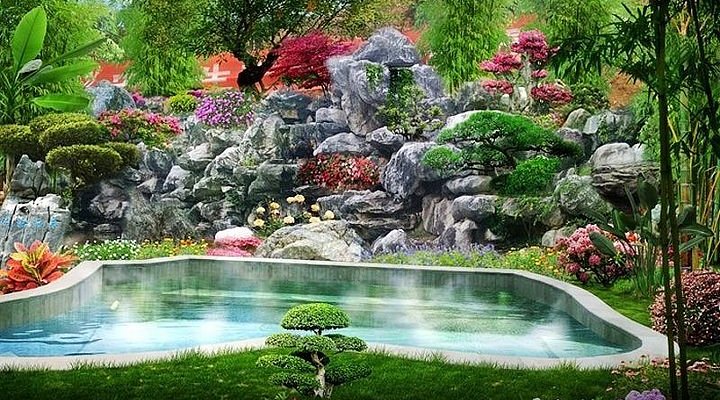
Beigu Mountain.
Local Cuisine and Accommodation Nearby
When visiting Beigu Mountain (北固山) in Zhenjiang, indulging in the local cuisine and finding the perfect place to stay can elevate your travel experience. The region is known for its delectable dishes and a variety of accommodations catering to different preferences.
Local Cuisine
-
Zhenjiang Vinegar Fish (镇江醋鱼)
This signature dish showcases the renowned Zhenjiang vinegar, known for its rich flavor and tartness. Typically made with freshwater fish, it’s often cooked with ginger and scallions, resulting in a dish that is both tangy and savory. A must-try for any visitor! -
Yangzhou Fried Rice (扬州炒饭)
A classic in Chinese cuisine, Yangzhou fried rice is a colorful mix of rice, vegetables, and proteins like shrimp or chicken. What sets it apart is the aromatic flavor and the skillful way the ingredients are stir-fried, creating a delightful dish that’s both hearty and satisfying. -
Suan Ni Bai Rou (蒜泥白肉)
Translated as “garlic sauce with sliced pork,” this dish features thinly sliced pork belly served with a tangy garlic sauce. The combination of tender meat and the zesty sauce makes it a refreshing option, perfect for those looking to explore the local flavors. -
Steamed Buns (包子)
These fluffy buns are a street food staple in Zhenjiang. They can be filled with a variety of ingredients, including pork, vegetables, or even sweet red bean paste. Enjoying these warm, soft buns from a local vendor adds a comforting touch to your culinary journey.
Accommodation Options
Luxury: Jinling Hotel Zhenjiang (金陵大酒店)
For those seeking a luxurious stay, the Jinling Hotel Zhenjiang offers elegant rooms with stunning views of the Yangtze River. With top-notch amenities, an onsite restaurant serving exquisite local and international dishes, and a serene atmosphere, this hotel ensures a memorable experience.
Boutique: Zhenjiang Hantang Hotel (镇江汉唐酒店)
This charming boutique hotel combines traditional Chinese aesthetics with modern comfort. Located conveniently near the city center, it provides personalized service and unique decor. Guests can enjoy a cozy atmosphere while exploring the local culture and attractions.
Budget: 7 Days Inn Zhenjiang (七天连锁酒店)
For budget-conscious travelers, the 7 Days Inn offers clean and comfortable rooms at an affordable price. It’s a practical option with essential amenities, allowing you to explore Zhenjiang and Beigu Mountain without breaking the bank. Plus, its strategic location makes it easy to access nearby attractions and dining options.
Whether you’re relishing the flavors of Zhenjiang or enjoying a restful night’s sleep, you’ll find that the local cuisine and accommodations enhance your adventure to Beigu Mountain, making your trip truly unforgettable.
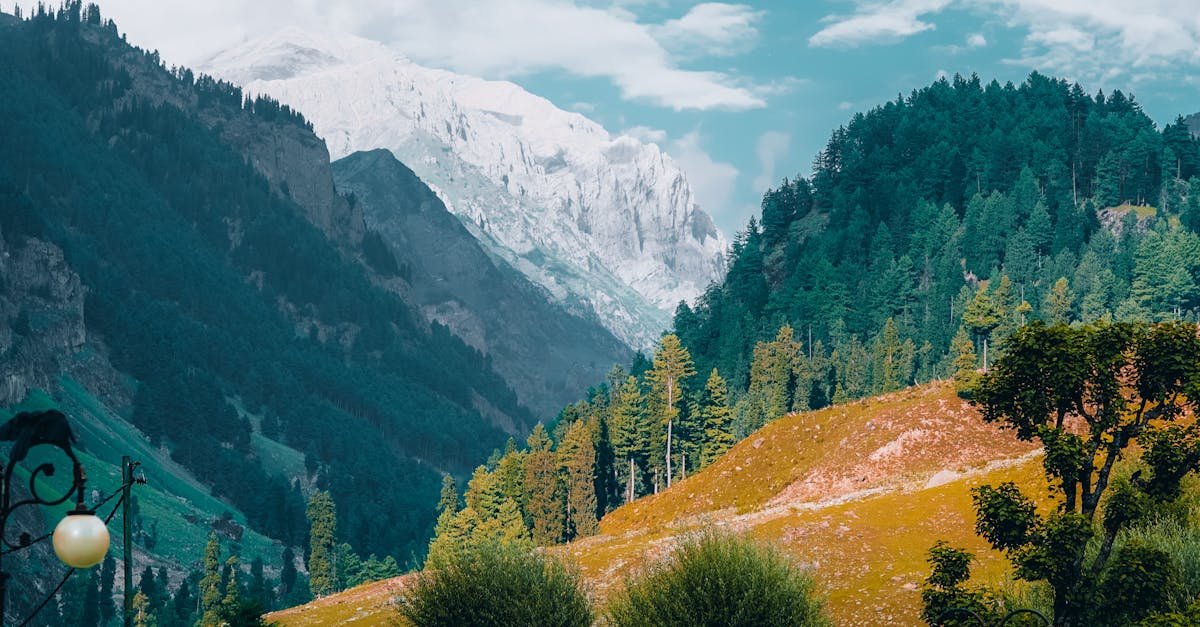
Beigu Mountain.
Frequently Asked Questions
Frequently Asked Questions about Beigu Mountain
-
Is Beigu Mountain suitable for children and the elderly?
Yes, Beigu Mountain can be suitable for children and elderly visitors, but it’s important to consider the steep climb to the summit. The trail can be challenging, especially in certain areas without shade. Younger children may need assistance, and elderly visitors should assess their physical condition before attempting the hike. -
Are there English signs throughout the park?
Yes, there are English signs in Beigu Mountain, but some translations may not be entirely accurate. While the key attractions and routes are marked in English, it’s helpful to have a basic understanding of Chinese or to travel with a local guide for a more enriching experience. -
How much time should I plan to spend at Beigu Mountain?
Plan to spend around 2 to 3 hours at Beigu Mountain. This allows time for the climb, exploring the scenic views, and taking photos. If you wish to enjoy a more leisurely visit or have a picnic, consider allocating extra time. -
What are the opening hours for Beigu Mountain?
Beigu Mountain is open daily from 8:00 AM to 5:00 PM. It’s advisable to start your visit earlier in the day to avoid the midday heat and to have ample time to enjoy the views. -
Is there an entrance fee to visit Beigu Mountain?
As of now, there is no entrance fee to access Beigu Mountain. However, it’s always a good idea to check for any changes in policy before your visit. -
What should I wear when visiting Beigu Mountain?
Wear comfortable clothing and sturdy shoes, as the hike can be strenuous. If you plan to visit during the summer months, dress in lightweight, breathable fabrics and don’t forget sunscreen and a hat for sun protection. -
Are there facilities like restrooms or food options nearby?
There are limited facilities within the park itself. It’s advisable to bring water, snacks, and any necessary supplies with you. Restrooms may be available at the entrance, but it’s best to plan ahead for a more comfortable visit. -
What can I expect in terms of the view from the top?
The view from the top of Beigu Mountain is breathtaking! You’ll be rewarded with panoramic views of Zhenjiang city, the Yangtze River, and even Yangzhou on clear days. Many visitors consider this view the highlight of their trip, so be sure to bring your camera!
Final Thoughts on Your Trip
As your journey at Beigu Mountain comes to a close, take a moment to reflect on the breathtaking views and the rich tapestry of history that envelops this remarkable destination. Standing atop the mountain, with Zhenjiang sprawling beneath you and the mighty Yangtze River flowing nearby, it’s easy to understand why this spot has captivated visitors for centuries. The invigorating hike, though challenging, rewards you with a sense of accomplishment and a perspective that few places can offer.
Each step on the winding paths is a step through time, revealing the stories of those who came before, from ancient defensive walls to the serene beauty of nature. As you descend, carry with you not just the memories of stunning vistas but also the connections forged with fellow travelers and the whispers of history that linger in the air.
Beigu Mountain is more than just a destination; it’s a reminder of the beauty that lies in exploration and the joy of discovering new horizons. So, as you leave, let the spirit of adventure guide you to your next journey—wherever it may lead. Embrace the world with open arms and an eager heart, for every adventure awaits just beyond the horizon.